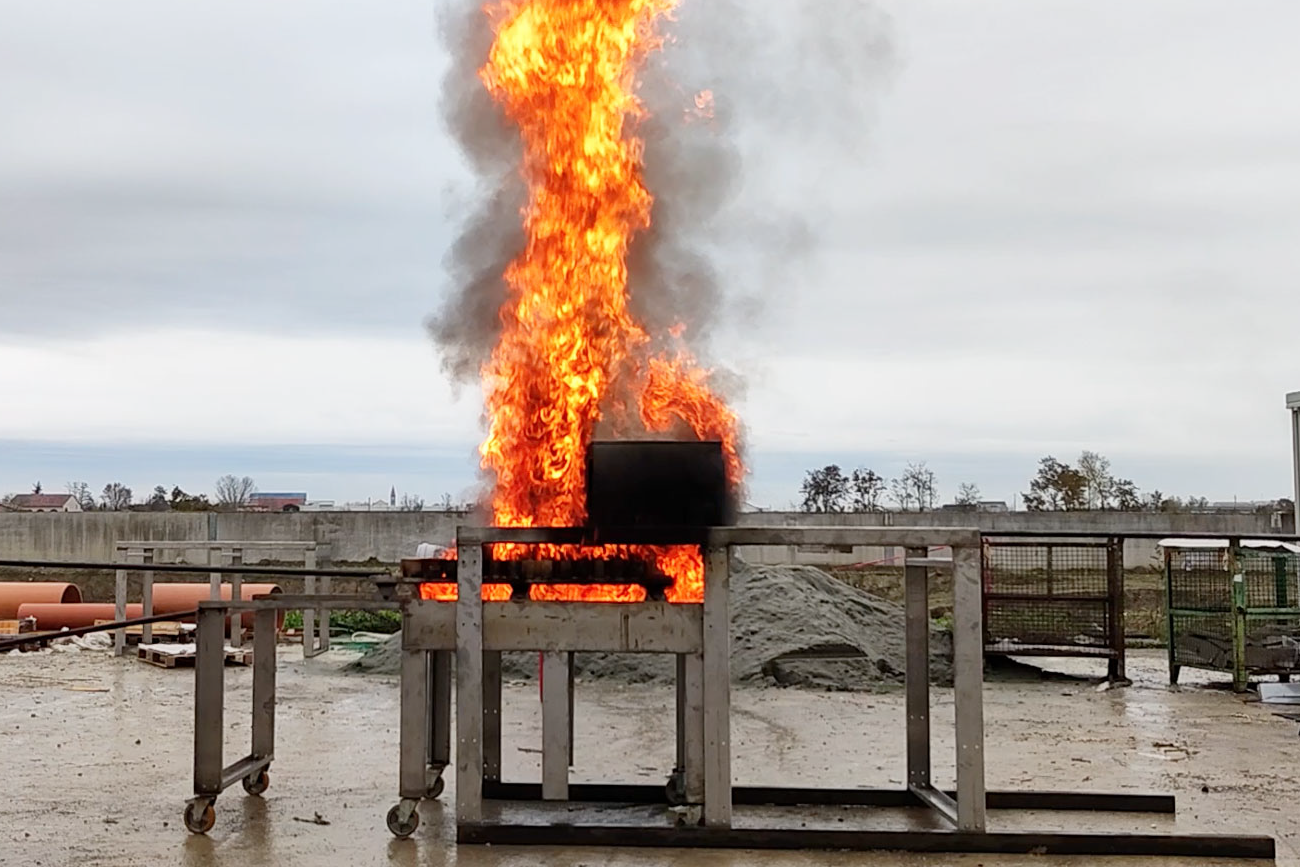

CEVLAB PERFORMS THE ECE R100 REV.03 APPROVAL ON ARCHIMEDE ENERGIA LITHIUM BATTERIES
Cevlab has carried out the tests necessary to obtain the approval, according to the ECE R100 Rev 03 Regulation, on the lithium batteries designed and produced by Archimede Energia. The batteries are designed to be fitted to M1 and N1 category four wheel vehicles (trucks and vehicles for the transport of people and goods).
REGULATION ECE R100: WHAT IS IT? WHY IS IT SO IMPORTANT?
The ECE Regulation No. 100 regulates the approval of four-wheel electric vehicles of categories M and N, the approval must be performed on the entire electric vehicle and it also applies to its subsystems and components before placing on the market.
The regulation specifies which tests must be carried out on the battery (of any type of chemistry) used by M and N vehicles. The compliance of a battery with Reg. ECE R100 is a fundamental step for obtaining the approval of the entire electric vehicle.
THE TESTS PERFORMED BY CEVLAB FOR APPROVAL
Cevlab, in accordance with the ECE R100 Rev 03 Regulation, is able to support the customer in the following tests:
- Vibration test (Annex 9A) to verify the safety of the battery subjected to vibrations during normal vehicle operation. The test involves a sinusoidal profile with a logarithmic sweep in the 7-50-7 Hz range and a maximum acceleration of 10g for a total duration of 3 hours;
- Thermal shock and cycling test (Annex 9B), to check the battery’s resistance to rapid temperature c
 hanges to which it may be subjected during its life. The test involves exposure to a minimum temperature of -40°C and a maximum temperature of +60°C, holding each temperature for 6 hours and repeating the cycle 5 times;
hanges to which it may be subjected during its life. The test involves exposure to a minimum temperature of -40°C and a maximum temperature of +60°C, holding each temperature for 6 hours and repeating the cycle 5 times; - Mechanical shock (Annex 9C) to verify the safety of the battery subjected to inertial loads that can occur in the event of a vehicle crash. The test foresees a pulse with a duration of 80 ms and a maximum acceleration of 28 g applied in the longitudinal and transversal direction of the vehicle (in acceleration and deceleration);
- Mechanical integrity (Annex 9D) to verify the safety performance of the battery subjected to contact stresses that can occur in the event of a vehicle crash. The test involves crushing the coil between two plates with a load between 100 and 105 kN;
- Fire resistance (Annex 9E) to verify the resistance of the battery when exposed to flames coming from outside the vehicle (to ensure that passengers have sufficient time to leave the passenger compartment in the event of a serious event). The test involves exposing the battery to direct flame (generated by the combustion of petrol) for 70 seconds, followed by exposure to indirect flame (obtained by shielding with refractory bricks) for 60 seconds;
- External short circuit (Annex 9F) to check battery safety in case of short circuit current. The test foresees the contact of the positive pole and the negative pole of the battery;
- Overcharge protection (Annex 9G) to check battery safety in case of overcharging. The test involves charging the battery with speed C/3 or C/2 until the intervention of the protection system which inhibits excessive charging;

- Over discharge protection (Annex 9H) to check battery safety in case of low state of charge. The test foresees the discharge of the battery with speed C/3 or C/2 until the intervention of the protection system which inhibits excessive discharge;
- Overtemperature protection (Annex 9I) to verify battery safety in the event of overheating generated by battery charge/discharge cycles and a cooling system malfunction. The test involves carrying out continuous charge and discharge cycles to obtain an increase in the internal temperature, until the threshold temperature set by the manufacturer is reached and the intervention of the protection system which inhibits the charge and/or discharge;
- Overcurrent protection (Annex 9J) to verify battery safety in case of excessive charging current. The test foresees the increase of the charge current beyond the limit established by the manufacturer, until the intervention of the protection system which inhibits the charge.
